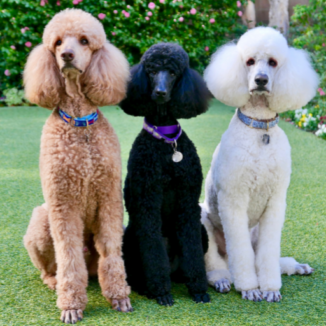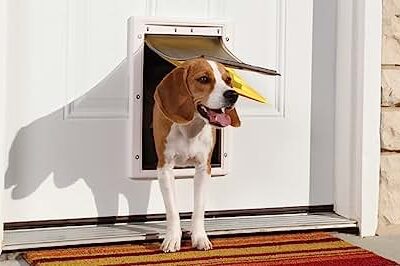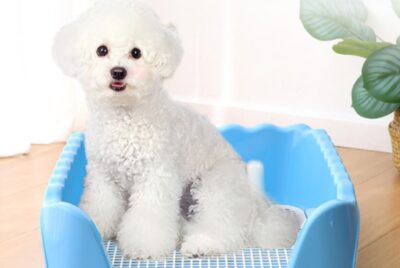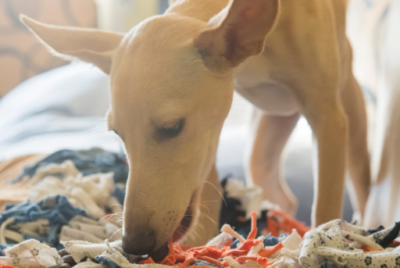Big Hypoallergenic Dogs
Introduction
As an enthusiast and advisor for big hypoallergenic dogs, I am excited to share the benefits and potential pitfalls of these amazing furry companions. Allergy sufferers often have limited options when it comes to owning pets, but big hypoallergenic dogs provide a solution by offering reduced allergic reactions and a suitable environment for allergy-prone individuals. In this article, we will explore the advantages of big hypoallergenic dogs, popular breeds to consider, important considerations before getting one, and some helpful tips for living harmoniously with your big hypoallergenic friend.
Understanding Big Hypoallergenic Dogs
Hypoallergenic dogs are breeds that are less likely to cause an allergic reaction in individuals who are prone to allergies. These dogs produce fewer allergens, such as dander, which can trigger allergies. While no dog breed is completely non-allergenic, hypoallergenic dogs are known to produce fewer allergens, making them a potential option for those who love dogs but suffer from allergies.
Benefits of Big Hypoallergenic Dogs
Reduced Allergic Reactions
One of the primary benefits of big hypoallergenic dogs is their ability to reduce allergic reactions. People with allergies to dogs often experience symptoms such as sneezing, itching, and watery eyes. Big hypoallergenic breeds tend to produce fewer allergens, which can significantly minimize these reactions and allow individuals to enjoy the companionship of a dog without compromising their health.
Suitable for Allergy-Prone Individuals
For individuals who are prone to allergies, big hypoallergenic dogs offer an opportunity to experience the joy of owning a pet without constant discomfort. The reduced allergens in their fur and dander make them a more suitable choice for those with sensitivities. It’s important to note that individual reactions may still vary, and it’s recommended to spend time with the specific breed beforehand to assess personal tolerance.
Low Shedding
Another advantage of big hypoallergenic dogs is their low shedding nature. Many of these breeds have hair instead of fur, which means they shed less compared to other dog breeds. This characteristic not only contributes to a cleaner environment but also reduces the amount of allergens released into the air. Regular grooming and brushing can further minimize shedding and keep their coat healthy.
Popular Breeds of Big Hypoallergenic Dogs
When considering big hypoallergenic dogs, several breeds stand out for their size and hypoallergenic qualities. Let’s take a look at some of these popular breeds:
Poodle
Poodles are renowned for their intelligence and elegant appearance. Available in standard, miniature, and toy sizes, they are considered one of the most hypoallergenic breeds. Their curly and dense coat minimizes shedding and keeps allergens trapped, making them an excellent choice for individuals with allergies.
Portuguese Water Dog
The Portuguese Water Dog is a large and energetic breed known for its intelligence and water-loving nature. Their thick, wavy coat is hypoallergenic and requires regular grooming to prevent matting. They are excellent companions for active individuals or families who enjoy outdoor activities.
Irish Water Spaniel
The Irish Water Spaniel is a unique and versatile breed that excels in water-related activities. With a dense and curly coat, they are considered hypoallergenic and shed very little. They require regular grooming and exercise to stay happy and healthy.
Afghan Hound
The Afghan Hound is a majestic and regal breed known for its long, silky coat. Despite their luxurious appearance, they are hypoallergenic and produce minimal dander. Their grooming needs are more intensive due to their long hair, but their stunning beauty and affectionate nature make them a favorite among dog lovers.
Considerations Before Getting a Big Hypoallergenic Dog
Before bringing home a big hypoallergenic dog, there are several important considerations to keep in mind:
Space Requirements
Big hypoallergenic dogs, despite their reduced shedding, still require ample space to move around comfortably. Ensure that your living situation can accommodate the size of the breed you choose. A spacious backyard or nearby parks for exercise are beneficial for their well-being.
Exercise and Training Needs
Just like any other dog, big hypoallergenic breeds require regular exercise and mental stimulation. Be prepared to dedicate time to meet their exercise needs and provide proper training to ensure they are well-behaved companions. Engaging in activities like walks, runs, or obedience training can help maintain their physical and mental health.
Grooming Demands
While big hypoallergenic dogs shed less, their grooming requirements can be more demanding. Regular brushing, occasional trims, and professional grooming are essential to prevent matting and keep their coat healthy. Factor in the time and cost associated with grooming when considering a big hypoallergenic breed.
Tips for Living with a Big Hypoallergenic Dog
To ensure a harmonious living environment with your big hypoallergenic dog, here are some helpful tips:
Regular Grooming
Consistent grooming is crucial for big hypoallergenic dogs. Brush their coat regularly to remove loose hair and minimize shedding. Regular baths with hypoallergenic shampoos can also help maintain their coat’s cleanliness and reduce allergens.
Allergy-Proofing Your Home
Create an allergy-friendly environment by keeping your home clean and minimizing allergens. Regularly vacuum and dust to remove pet dander and consider using air purifiers to improve air quality. Additionally, designate specific areas for your dog to minimize their contact with allergen-sensitive areas like bedrooms or furniture.
Proper Diet and Nutrition
Maintain a healthy diet for your big hypoallergenic dog. High-quality, hypoallergenic dog food can contribute to a healthy coat and overall well-being. Consult with your veterinarian to determine the best dietary options for your dog’s specific needs.
Potential Pitfalls of Big Hypoallergenic Dogs
While big hypoallergenic dogs offer numerous benefits, there are a few potential pitfalls to consider:
High Maintenance
Big hypoallergenic dogs often require more maintenance compared to other breeds. Their grooming needs can be time-consuming and may require professional assistance. Consider your schedule and willingness to invest time and effort into their care.
Cost Considerations
Big hypoallergenic dogs can be more expensive to own. Their initial purchase cost may be higher, and grooming expenses, quality food, and regular veterinary care should also be factored into the overall cost of ownership. Be prepared for the financial commitment associated with a big hypoallergenic breed.
Limited Availability
Some big hypoallergenic breeds may have limited availability or require a waiting period due to their popularity and specific breeding requirements. Research reputable breeders or consider adoption options to find the right big hypoallergenic dog for your family.
Conclusion
Big hypoallergenic dogs offer a fantastic opportunity for individuals with allergies to enjoy the companionship of a dog without compromising their health. Their reduced allergens and low shedding make them suitable options for allergy-prone individuals. By considering important factors such as space requirements, exercise needs, and grooming demands, you can make an informed decision about bringing a big hypoallergenic dog into your home. Remember to provide regular grooming, allergy-proof your living space, and offer a nutritious diet for a happy and healthy furry friend.
FAQs (Frequently Asked Questions)
Are all big hypoallergenic dogs completely non-allergenic?
No, while big hypoallergenic dogs produce fewer allergens, there is no completely non-allergenic dog breed. Individual reactions can still vary, so spending time with the specific breed beforehand is recommended to assess personal tolerance.
Can big hypoallergenic dogs be suitable for families with children?
Yes, many can be excellent companions for families with children. However, it’s essential to choose a breed known for its friendly and tolerant nature and supervise interactions between dogs and children to ensure a safe environment for everyone.
Do big hypoallergenic dogs require more grooming than other breeds?
Yes, big hypoallergenic dogs often require more grooming due to their coat’s characteristics. Regular brushing, occasional trims, and professional grooming are necessary to keep their coat healthy and minimize matting.
Are big hypoallergenic dogs generally more expensive to purchase?
Yes, they can be more expensive to purchase compared to other breeds. Their popularity and specific breeding requirements contribute to the higher price. Additionally, ongoing costs such as grooming, quality food, and veterinary care should be considered.
Can big hypoallergenic dogs adapt to apartment living?
Yes, some big hypoallergenic dogs can adapt well to apartment living if their exercise needs are adequately met. It’s essential to provide regular exercise and mental stimulation, such as daily walks and playtime, to keep them happy and healthy in a smaller living space.




